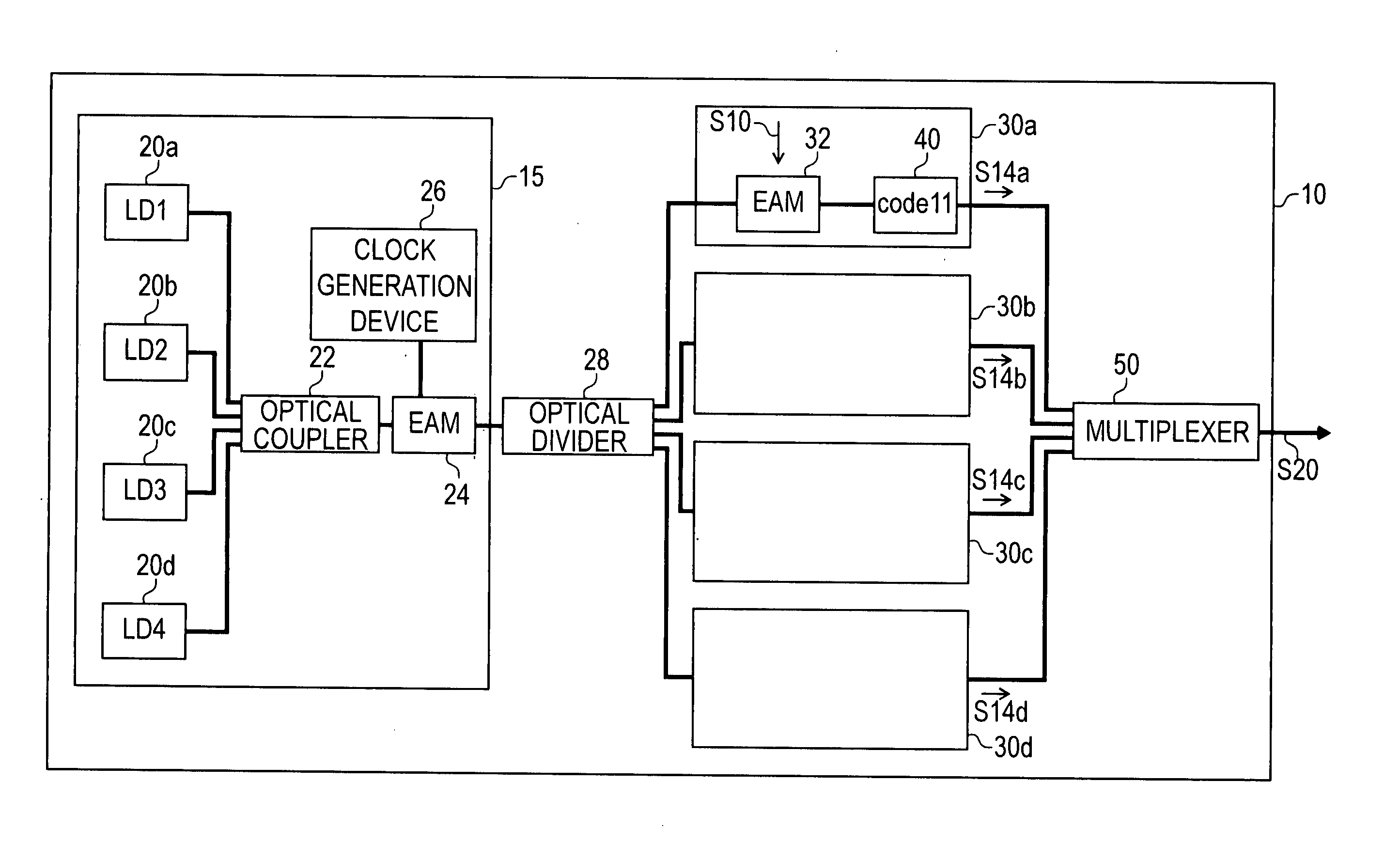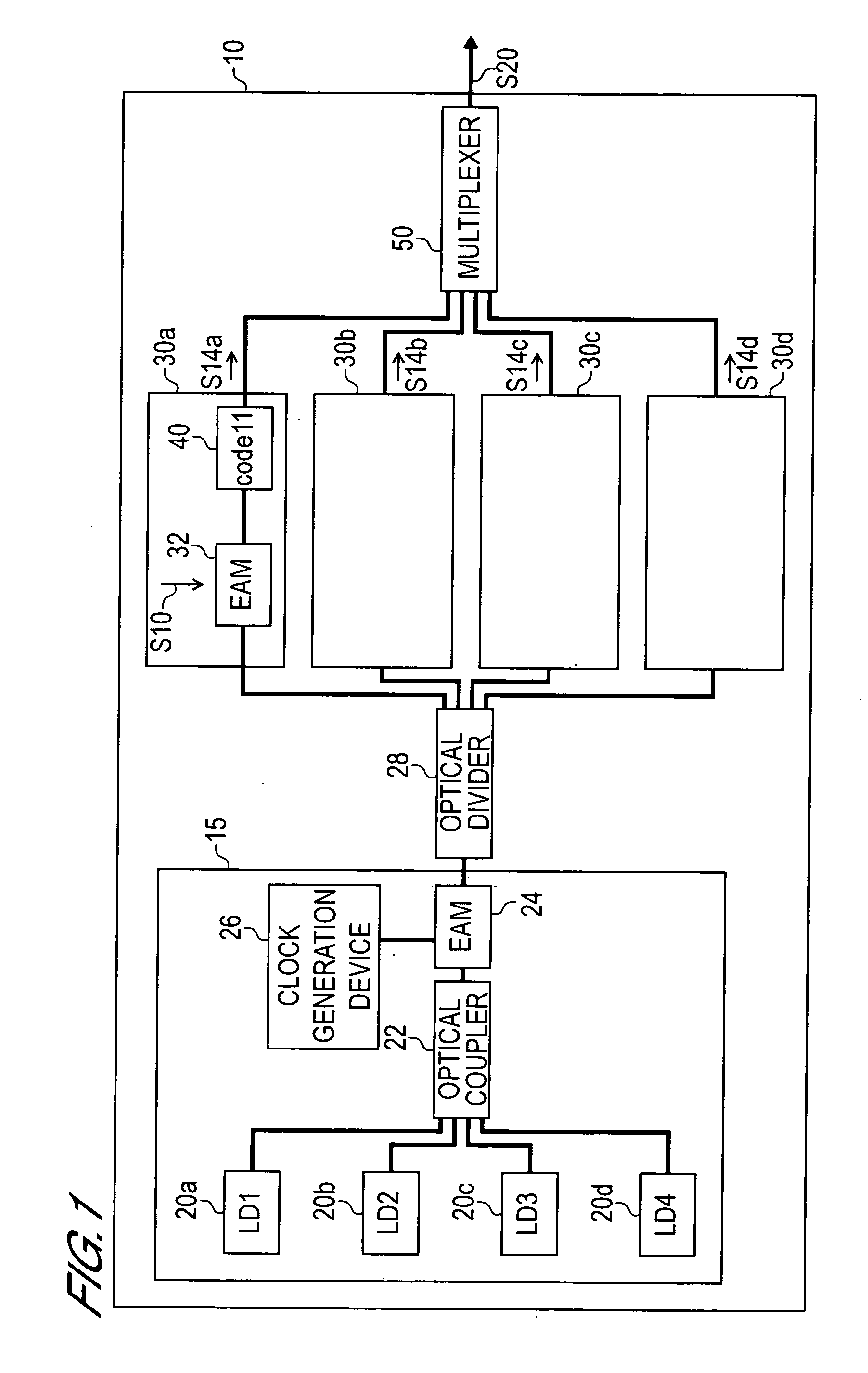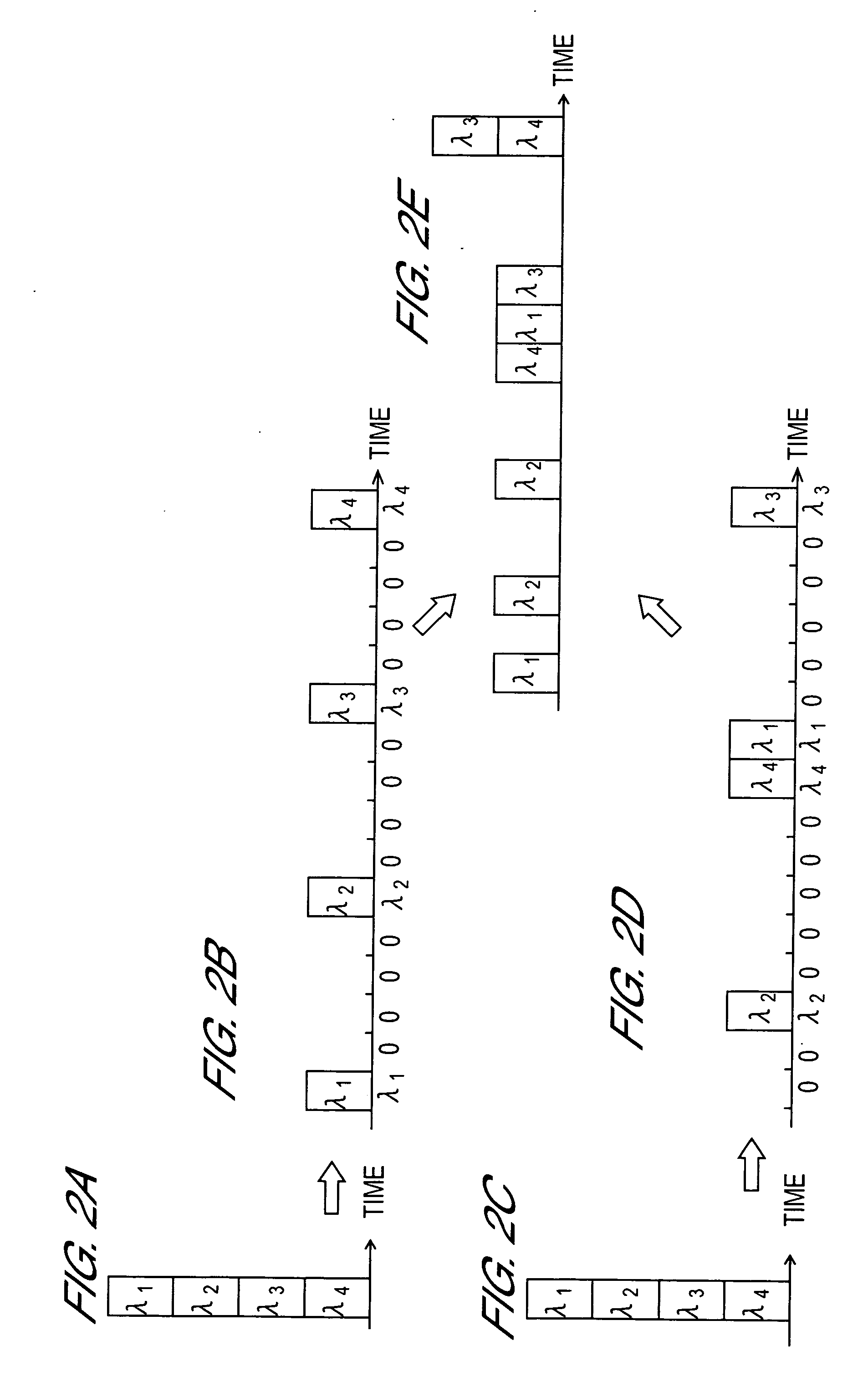Optical code division multiplexing receiving device and time gate processing method in optical code division multiplexing receiving device
a technology of optical code division and receiving device, applied in optical code multiplexing, polarisation multiplex system, multi-component communication, etc., can solve the problems of clock signal substantial time jitter, increase in error rate of encoded signal, so-called interference noise, etc., and achieve the effect of eliminating unnecessary wavelength components
- Summary
- Abstract
- Description
- Claims
- Application Information
AI Technical Summary
Benefits of technology
Problems solved by technology
Method used
Image
Examples
Embodiment Construction
[0052] With reference to the drawings, embodiments according to the invention will be explained hereinbelow. In the following, examples of preferable configurations of the invention will be explained; but the numerical conditions of constituent components and similar are merely preferable examples. Hence the invention is not limited to the following embodiments.
[0053] One example of an OCDM communication receiving device of this invention which receives three-wavelength code, quad-multiplexed OCDM signals will be explained. Here, a time-spreading wavelength-hopping method is used for encoding optical pulse signals. Specifically, optical pulse signals comprising four wavelength components, λ1 to λ4, are encoded using four codes each. Here a three-wavelength code, quad-multiplexed OCDM signal is an OCDM signal which is encoded with three wavelengths selected from among the four wavelengths λ1 to λ4 for each code during encoding. Here, the four codes are represented as code 1 to code ...
PUM
 Login to View More
Login to View More Abstract
Description
Claims
Application Information
 Login to View More
Login to View More - R&D
- Intellectual Property
- Life Sciences
- Materials
- Tech Scout
- Unparalleled Data Quality
- Higher Quality Content
- 60% Fewer Hallucinations
Browse by: Latest US Patents, China's latest patents, Technical Efficacy Thesaurus, Application Domain, Technology Topic, Popular Technical Reports.
© 2025 PatSnap. All rights reserved.Legal|Privacy policy|Modern Slavery Act Transparency Statement|Sitemap|About US| Contact US: help@patsnap.com



